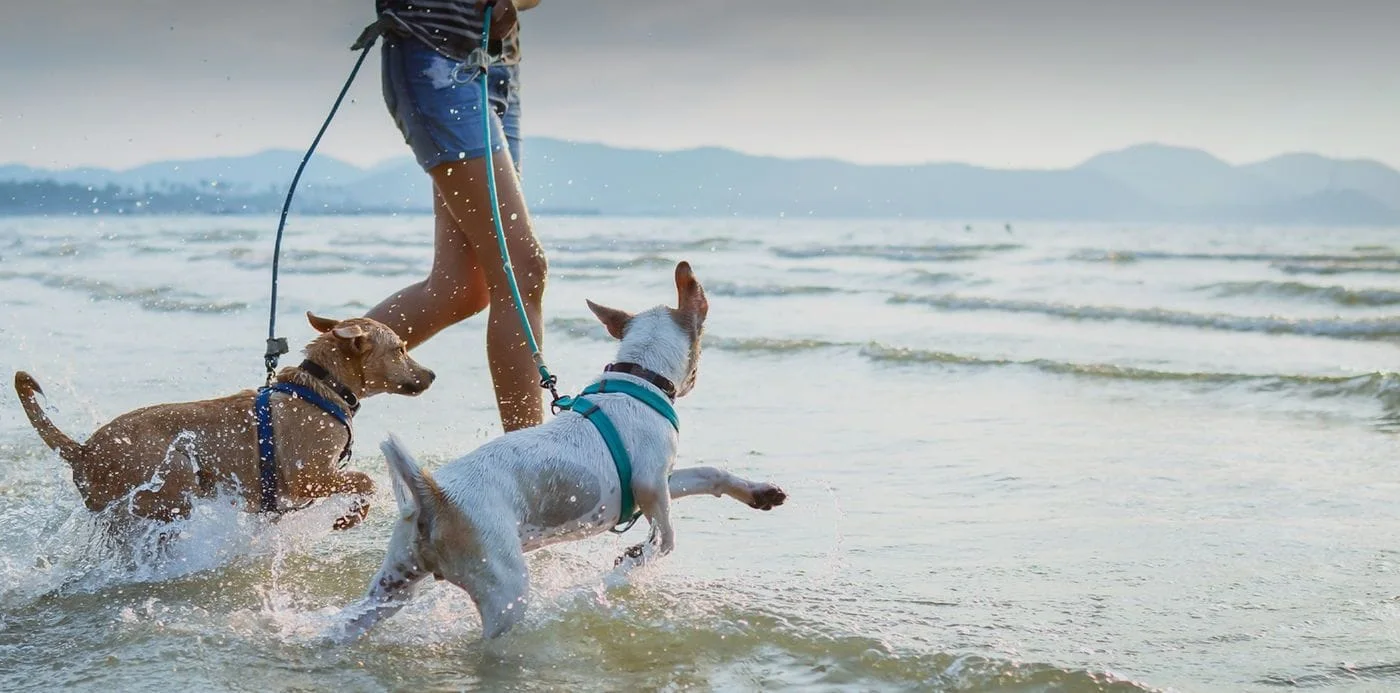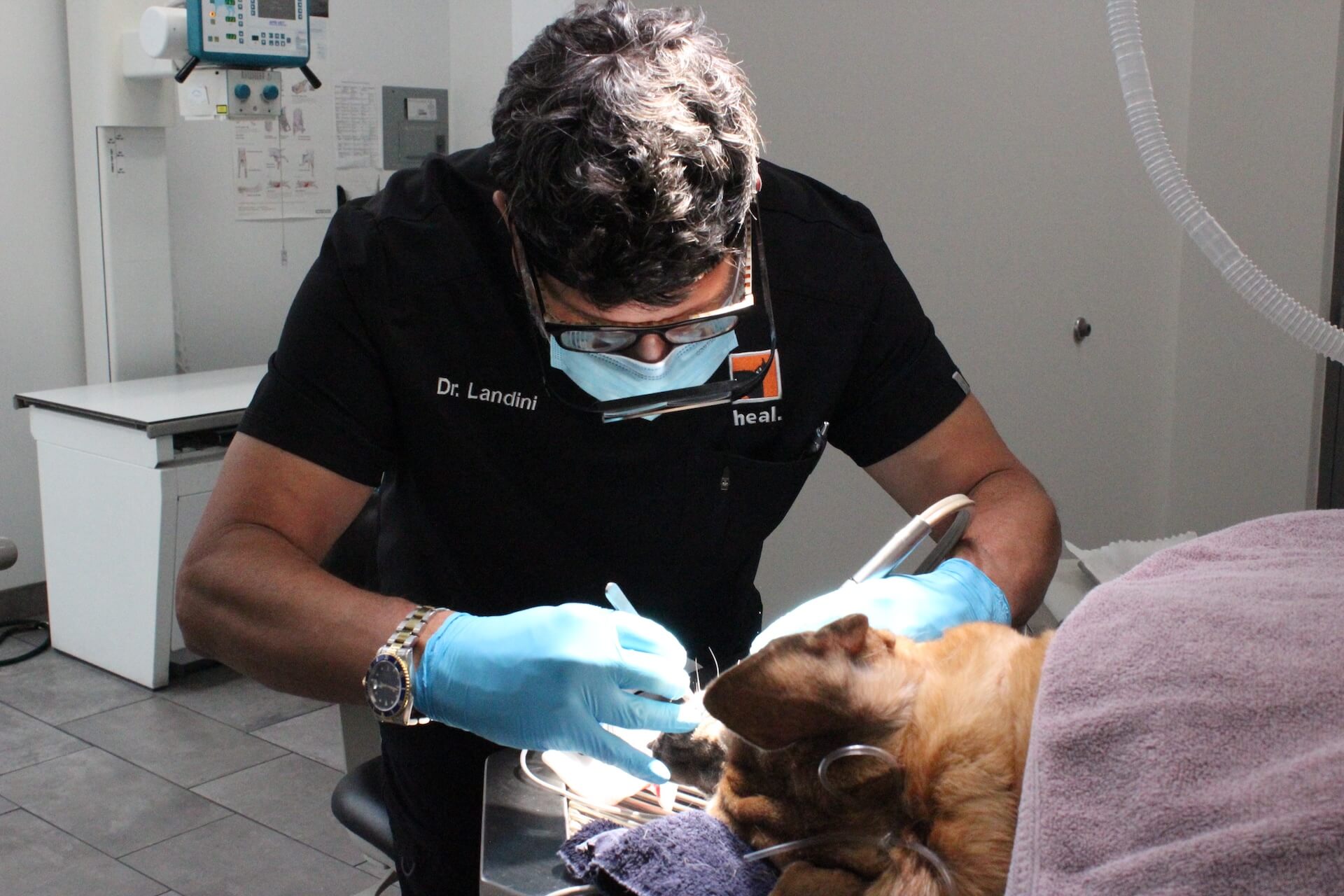Post-Op Recovery Guide After Your Dog’s tplo surgery
Post-Op Recovery Guide After Your Dog’s tplo surgery
Blog Article
Why Animal Rehab Is Essential: the Conveniences of Vet Services for Your Family pet's Recovery
Animal rehab is a necessary element of healing for family pets dealing with injuries or impairments. Veterinary solutions give vital assistance via tailored rehabilitation strategies that attend to specific needs. These strategies often include discomfort administration, physical therapy, and dietary assistance. Recognizing the various aspects of pet rehabilitation can brighten its relevance in enhancing recovery outcomes. What specific advantages do these services offer, and how can they transform an animal's healing journey?
Comprehending Animal Rehabilitation
Animal rehabilitation includes a series of healing techniques aimed at bring back the health and functionality of injured or disabled animals. This field incorporates different methods, including physical treatment, hydrotherapy, and job-related treatment, customized to satisfy the certain demands of each pet. Rehab professionals examine an animal's condition, creating personalized therapy plans that might include exercises to strengthen muscle mass, boost flexibility, and enhance total well-being. The process not only concentrates on physical healing however also addresses psychological and behavioral elements. Animals usually experience stress and stress and anxiety complying with an injury, making psychological health and wellness considerations essential in rehabilitation. By creating a helpful environment, therapists can aid pets reclaim their self-confidence and adapt to their new circumstances. Through regular sessions, pets can experience substantial renovations, ultimately leading to a better lifestyle. On the whole, comprehending pet recovery highlights its significance in promoting recovery and boosting the bond between family pets and their proprietors.
The Duty of Discomfort Administration in Healing
How crucial works discomfort management in the recovery of hurt animals? It plays an important duty in promoting recovery and enhancing the total health of family pets. Proper pain administration not only alleviates pain yet also advertises flexibility, enabling pets to participate in rehabilitation tasks necessary for recovery. When pain is successfully taken care of, animals tend to respond positively to treatment, bring about quicker rehab outcomes.Veterinarians use different methods to analyze and deal with pain, including medicines, acupuncture, and different treatments. By customizing discomfort management approaches to the specific requirements of each pet, vets can assure that animals remain calm and participating throughout their healing trip. In addition, reducing discomfort assists decrease stress, which can prevent recovery and lengthen recovery times. To summarize, effective discomfort administration is crucial for improving the recuperation procedure and improving the lifestyle for hurt pets.
Physical Therapy Techniques for Animals
Many physical treatment strategies are available to help in the rehab of pet dogs recouping from injuries or surgeries (emergency vet near me). These strategies can boost wheelchair, alleviate discomfort, and promote healing. Healing workouts, for example, assistance strengthen muscle mass and improve joint function, enabling pets to reclaim their physical abilities slowly. Hands-on treatment, which consists of massage and mobilization, can ease tension and enhance flow, adding to a quicker recovery.Other techniques such as passive series of movement exercises motivate joint flexibility and minimize rigidity. Furthermore, electrical stimulation therapy may be utilized to boost nerves and muscle mass, promoting healing and discomfort relief.Veterinary experts commonly tailor these strategies to each family pet's details demands, making sure an extensive rehab strategy. By applying these physical treatment approaches, animals can experience improved lifestyle and a more successful recuperation from their ailments. The assimilation of these methods right into recovery programs is vital for ideal recuperation outcomes
Benefits of Hydrotherapy for Rehab
Hydrotherapy uses substantial benefits in pet rehab, particularly in boosting flexibility. This water-based treatment advertises discomfort relief while giving convenience to harmed or recovering pet dogs. Additionally, it helps with strength-building exercises that contribute to total physical recovery.
Enhanced Mobility Renovation
As pets recover from injuries or surgical treatments, enhanced flexibility usually comes to be a main objective of their rehab. Hydrotherapy works as a valuable device in achieving this purpose. Via water-based workouts, animals can participate in low-impact activities that facilitate joint flexibility and reinforce muscular tissues without the anxiety of weight-bearing activities. The buoyancy of water supports their bodies, enabling raised series of movement and movement improvement. Additionally, hydrotherapy urges far better equilibrium and control, which are essential for bring back regular movement patterns. Normal sessions can lead to substantial progress in a pet's physical capacities, eventually enhancing their lifestyle. This approach not just aids in recuperation yet likewise advertises a more energetic and satisfying lifestyle post-rehabilitation.
Pain Alleviation and Convenience

Relief from pain is an important element of pet rehab, and hydrotherapy greatly adds to this procedure. By utilizing water's buoyancy, hydrotherapy lowers joint stress and alleviates pain during motion. This healing strategy offers a comforting atmosphere where pet dogs can involve in mild workouts without the full weight of their bodies affecting their healing. The warm water promotes blood flow, promoting recovery while also motivating leisure. Additionally, hydrotherapy sessions can be tailored to fulfill the specific requirements of the pet, ensuring suitable convenience. As pets experience decreased discomfort and increased comfort degrees, their general desire to join recovery tasks commonly boosts, bring about an extra reliable recovery trip. Hydrotherapy offers as a vital tool in enhancing pain relief and convenience throughout rehabilitation.
Strength Structure Exercises
Strength-building workouts play a vital duty in the rehabilitation procedure, with hydrotherapy offering distinct advantages. This form of therapy utilizes water resistance to improve muscle toughness without putting excessive stress on the joints. The buoyancy of water supports the animal's weight, permitting for safer motion and raised series of movement. In addition, hydrotherapy can improve cardio health and promote overall physical fitness, aiding in quicker healing from injuries or surgical treatments. The controlled setting also reduces the threat of reinjury, making it a suitable choice for family pets requiring recovery. Normal hydrotherapy sessions can cause visible renovations in flexibility, strength, and endurance, ultimately improving the animal's top quality of life and capability to go back to normal tasks.
Significance of Custom-made Rehab Strategies
Custom-made rehab strategies are important for attending to the special demands of each animal, making certain personalized treatment approaches. These strategies enable for effective progression monitoring and necessary changes, promoting perfect healing outcomes. In addition, an all natural method can enhance the overall health of the animal, advertising a much more thorough rehabilitation experience.
Individualized Treatment Approaches
While many recovery programs take on a one-size-fits-all method, the unique requirements of each animal necessitate customized therapy plans for optimal recovery. Custom-made rehab plans think about numerous factors, including the animal's varieties, age, case history, and details injuries or conditions. By tailoring treatments, vets can deal with each pet's special difficulties, making best use of the effectiveness of the recovery process. Individualized plans may include various techniques such as physical treatment, hydrotherapy, and restorative workouts, making sure that the treatment aligns with the pet's abilities and progress. In addition, personalized techniques promote a more powerful bond between the family pet and the caregiver, promoting a more appealing and supportive recovery environment. Eventually, personalized therapy is essential for attaining finest possible results in pet recovery.
Development Monitoring and Adjustments

Holistic Recovery Strategies
All natural recuperation approaches are necessary for effective pet recovery, as they highlight the value of individualized therapy plans customized per animal's details needs. This method thinks about the physical, psychological, and ecological variables affecting recuperation. Custom-made rehab strategies might include a mix of physical treatment, dietary therapy, and behavior alterations. By dealing with these varied aspects, vets can boost the general health of the pet and promote a much faster healing. Moreover, such tailored methods promote a deeper understanding of the animal's special challenges, bring about extra reliable treatments. Eventually, alternative healing strategies not only improve physical health however likewise add to the animal's psychological and emotional stability, making sure a detailed rehabilitation experience.
The Influence of Nutrition on Healing
Nourishment plays an important duty in the healing process for fixing up pets, frequently figuring out the rate and performance of recovery. A well-balanced diet regimen supplies the required nutrients that sustain tissue repair service, boost the body immune system, and boost total vitality. Protein is particularly essential, as it assists in muscle restoring and recovery from injuries. Essential fats, vitamins, and minerals additionally contribute to decreasing inflammation and advertising optimum mobile function.Veterinarians often stress the relevance of tailored nutrition strategies, thinking about each animal's details requirements, age, and click here wellness standing. Appropriate hydration is similarly important, as liquids promote nutrition absorption and assistance in detoxification. By ensuring that family pets receive proper nourishment, caretakers can considerably boost their chances of a successful recovery, bring about much better lasting health and wellness outcomes. Eventually, nutrition offers as a foundational aspect in the recovery journey, sustaining animals in gaining back strength and durability post-injury or ailment.
Success Stories: Pets That Flourished After Rehabilitation
Effective rehabilitation tales are plentiful, showcasing the strength of family pets who have gotten over considerable obstacles. Take, as an example, Bella, a golden retriever that suffered serious injuries from a vehicle mishap. With committed veterinary care and a detailed rehab program, she reclaimed her movement and returned to her lively self, much to her owner's delight. In a similar way, Max, an elderly pet cat diagnosed with arthritis, experienced amazing improvement with a combination of physical treatment and discomfort management. His newly found dexterity permitted him to enjoy his favorite sunbathing places once more. One more inspiring case is that of Coco, a rescued greyhound who overcame stress and anxiety via therapy and socialization methods, allowing her to grow in her brand-new home. These success tales exhibit the transformative power of pet recovery, stressing that with the best support, pets can not only recuperate however lead meeting lives, improving the bonds they share with their families.
Regularly Asked Concerns
How much time Does the Rehabilitation Refine Normally Take for Pet Dogs?
The rehab process for animals generally varies based on the injury or problem, varying from a few weeks to several months. Specific progression, treatment type, and commitment to workouts greatly affect the general duration of recuperation.
Exist Any Kind Of Risks Connected With Pet Rehab?
Animal rehabilitation might lug risks such as worsening of injuries, inappropriate methods bring about pain, or inadequate monitoring throughout recovery. These variables can impede progression and affect the total efficiency of the rehabilitation procedure.

Can All Pets Take Advantage Of Rehab Services?
Not all pet dogs may call for rehab, yet lots of can benefit substantially. Rehabilitation solutions can improve wheelchair, reduce discomfort, and improve general health, specifically for those recuperating from injuries, surgeries, or persistent conditions.
Just How Can I Prepare My Pet Dog for Rehabilitation Procedure?

What Signs Suggest My Animal Requirements Recovery?
Signs suggesting an animal may need rehab consist of trouble strolling, limping, reduced task degrees, reluctance to jump, or indications of discomfort. Observing these actions can motivate owners to look for specialist evaluation and therapy for their pet dogs.
Report this page